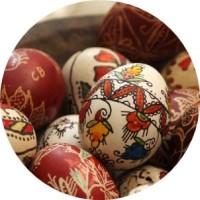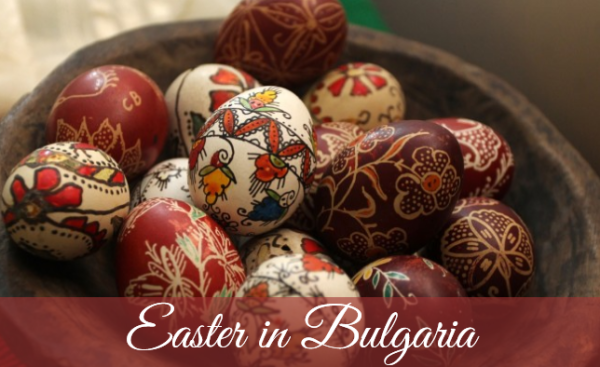 Easter is a major holiday in Bulgaria: its Bulgarian name “Velikden” means “great day”. The preparation for the day starts a week earlier, with the customs established in the centuries, based on traditions and intertwined with Bulgarian customs.
Easter is a major holiday in Bulgaria: its Bulgarian name “Velikden” means “great day”. The preparation for the day starts a week earlier, with the customs established in the centuries, based on traditions and intertwined with Bulgarian customs.
Usually Easter in Bulgaria is one week after the Catholic Easter. The day of Orthodox Easter is calculated in relation to the first full moon after the spring equinox.
Traditional Egg Dyeing
Egg dyeing and ritual bread baking are among the highlights of Orthodox Easter preparations in each Bulgarian family. Nowadays ready dye sets are sold, but Bulgarians also rely on plants for dyeing eggs: beetroot for red, onion shells for yellow, nettle for green, red onion shells for purple, coffee for brown.
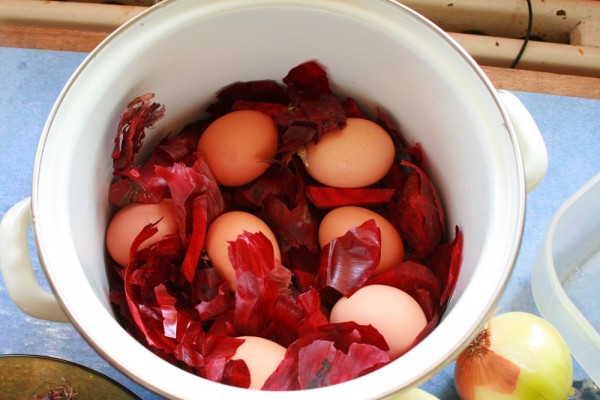
Photo: http://bit.ly/1HQkmA4
Herbs also provide vivid colors from nature’s palette. Adding decorations, to make the eggs real works of art, is a popular choice. People use parsley leaves stuck to the egg before it goes into the dye, to leave the shell under the leaves undyed. Those who are good at drawing make simple or elaborate pictures using wax before dyeing the eggs.
To add shine, household members participating in the egg dyeing dab a piece of cotton wool into vegetable oil and polish the dyed eggs. Thus the basket replete with colorful eggs will shine in a rainbow profusion of colors. Is the process of dyeing eggs in your country similar to that one or you use other techniques?
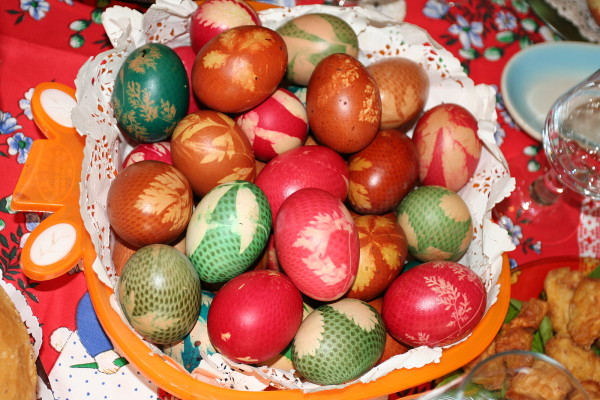 It is a rule to dye the first egg in red, in keeping with the tradition, to commemorate Christ’s sacrifice and His blood. When the first egg is ready, it is time to make a cross sign over the forehead of the family’s firstborn child. Rubbing the red egg into the cheeks of all the children in the household is also a must.
It is a rule to dye the first egg in red, in keeping with the tradition, to commemorate Christ’s sacrifice and His blood. When the first egg is ready, it is time to make a cross sign over the forehead of the family’s firstborn child. Rubbing the red egg into the cheeks of all the children in the household is also a must.
These rituals ensure good health for the little ones, all the year round. To give the due respect to seniors, the family leaves the most elderly woman in the household to do the painting, the cross sign and the rubbing. Then the first red egg has its special place allotted to it, in front of the home icon, or in the glassed wall unit, where it spreads the message of goodness, health and prosperity until the next year. That egg is also considered to be a worthy guardian of the home for a whole year.
The married couple’s sponsors are held in high esteem. When the eggs are painted, a separate basket is filled with eggs for them, to honor them on the Great Day.
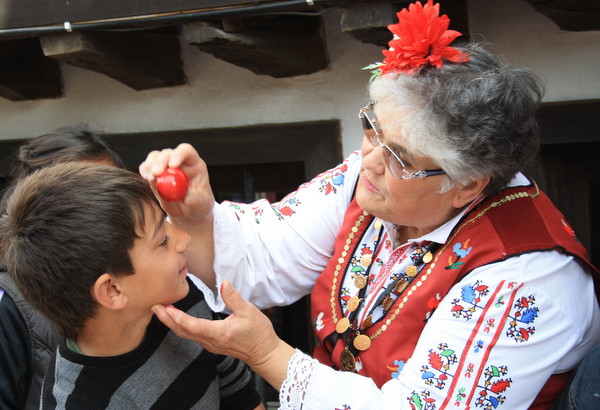
Photo: http://bit.ly/1N959kr
“Kozunak” – Bulgarian Easter Bread
The ritual bread is part and parcel of Easter celebrations. In Bulgaria it is called “kozunak”. That is a type of sweet bread, with milk and plenty of eggs, to meet the need for abundance on the table after the period of fasting. The kozunak appeared in Bulgaria in the end of the 19th century. It is believed it was brought to Bulgaria by Hungarian immigrants. The name was borrowed from Romanian, where it means “pastry with grapes”, and the Romanian “cozonac” was borrowed from Greek: there, the word “kuzunaki” means “bell”, referring to the shape of the ritual bread at that time.
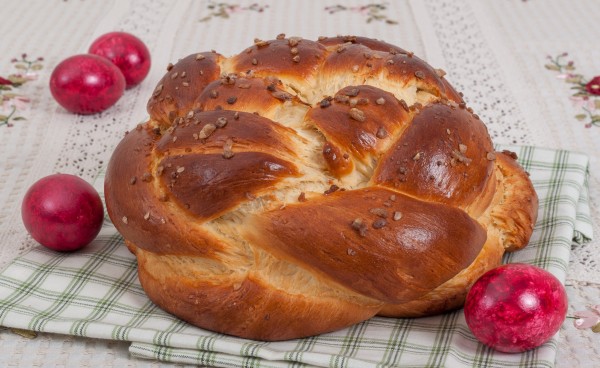
Photo: http://bit.ly/1CwQQuf
Preparing the kozunak is no simple matter. There are a host of specifics which guarantee the quality and scrumptiousness of the bread. For instance, the yeast should have a temperature of 28 to 30 degrees Centigrade, the room where the dough is prepared should be warm and without any draughts, to prevent the dough from “catching a cold”.
When the dough is ready to go into the oven, it should take exactly one third of the tin in which it is to be baked. Both round and rectangular kozunaks are made. Decorating the kozunak is a frequent choice. Plaited dough strips, red eggs nestled into the bread top, almonds are all popular decorations.
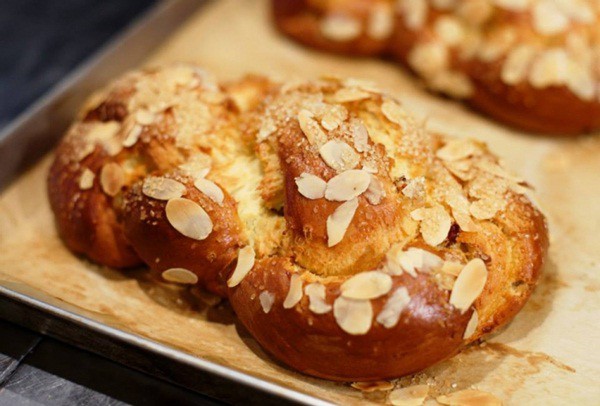
Photo: http://bit.ly/1JnYGfS
The eggs are dyed on Holy Thursday. Tradition has it that the kozunak should also be prepared on Thursday. When the preparations for Easter in Bulgaria, dyeing the eggs and making the kozunak, have been completed on Thursday, it is time to rest on Holy Friday: the day when no work should be done.
Easter Celebrations in Bulgarian
On Holy Saturday, it is time for the solemn church service. In the evening, prior to midnight, everyone is in the nearby church. The lights go out before midnight, the priest takes out a candlestick with three lighted candles. Everyone lights their candles from the priest’s ones, and takes them home.
When midnight comes, the bells start chiming, to announce the resurrection of Christ. Standing outside the church, the priest says” “Hristos Vozkrese!” Everyone follows the priest singing a solemn song and tours the icon of the resurrection. Then the priest knocks on the church door, inviting it to open to let in Him who has risen. Everyone goes in, and the solemn liturgy starts.
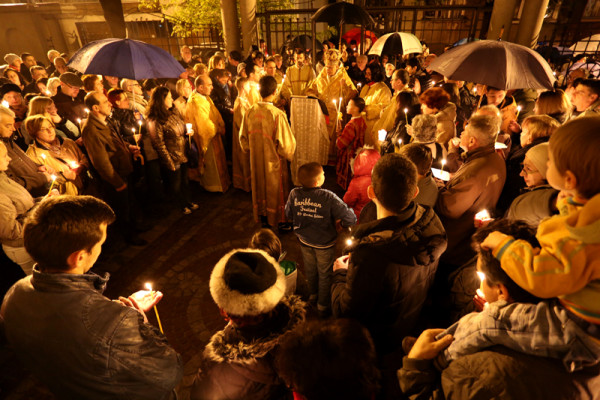
Photo: http://bit.ly/1DJoJzn
The Easter celebrations in Bulgaria continued for three days. On Holy Sunday they go to church for the solemn service, and get back with lighted candles, greeting each other with “Hristos vozkrese!” (“Christ has risen!”) Newlyweds visit their sponsors and parents, carrying kozunak and baskets replete with dyed eggs.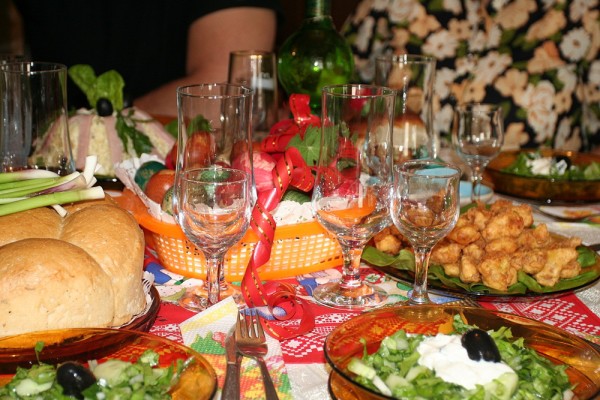 Are the Easter rituals similar to those in your country?
Are the Easter rituals similar to those in your country?
- Women Travel the World - December 5, 2015
- Custom Guided and Self-guided Tours in Bulgaria and the Balkans - June 30, 2015
- Bulgarian Wines and Wine Tasting - April 21, 2015

